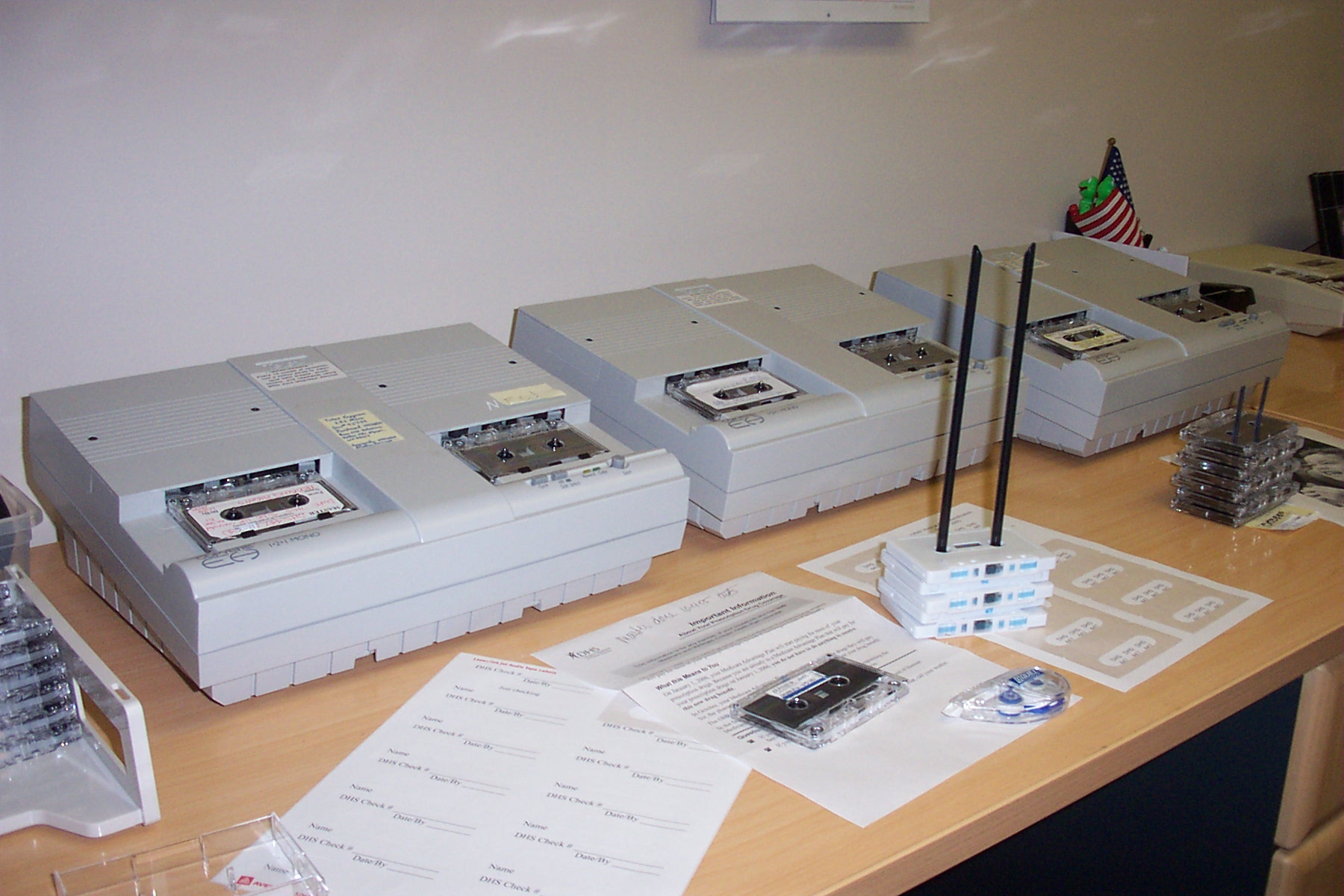In today’s terminology, Audio Tape refers to any product that is provided to the end user on an audiocassette tape. Depending on their use, these cassettes can come in many lengths, tape speeds and packaging. General guidelines exist for preparing audio recordings. These are published by the Library of Congress, National Library Services for the Blind and Physically Handicapped, Materials Development Center. They include:
» Narration should be done in a quiet area with limited echo or reverberation.
» Tapes should be of good quality.
» Equipment should be of high enough quality to prevent pops and clicks created when starting and stopping the taping process.
» A conversational tone should be used.
» Rate of reading should be at a comfortable rate.
Guidelines become more complex and stringent when describing documents that are going to be distributed for the Library of Congress or for use by more than one person.
There is equipment that will record and play the tape at half the speed of those in standard cassette decks. Additionally, such machines use an approach that allows for four separate tracks to be recorded on each cassette. This approach means that a standard 60-minute tape can contain 240 minutes or four hours of material instead of one. Since a standard novel of 300 pages may take as much as ten hours of listening time, the user only has to deal with three cassettes instead of ten. The same concerns are present with preparation of textbooks.








Speak Your Mind